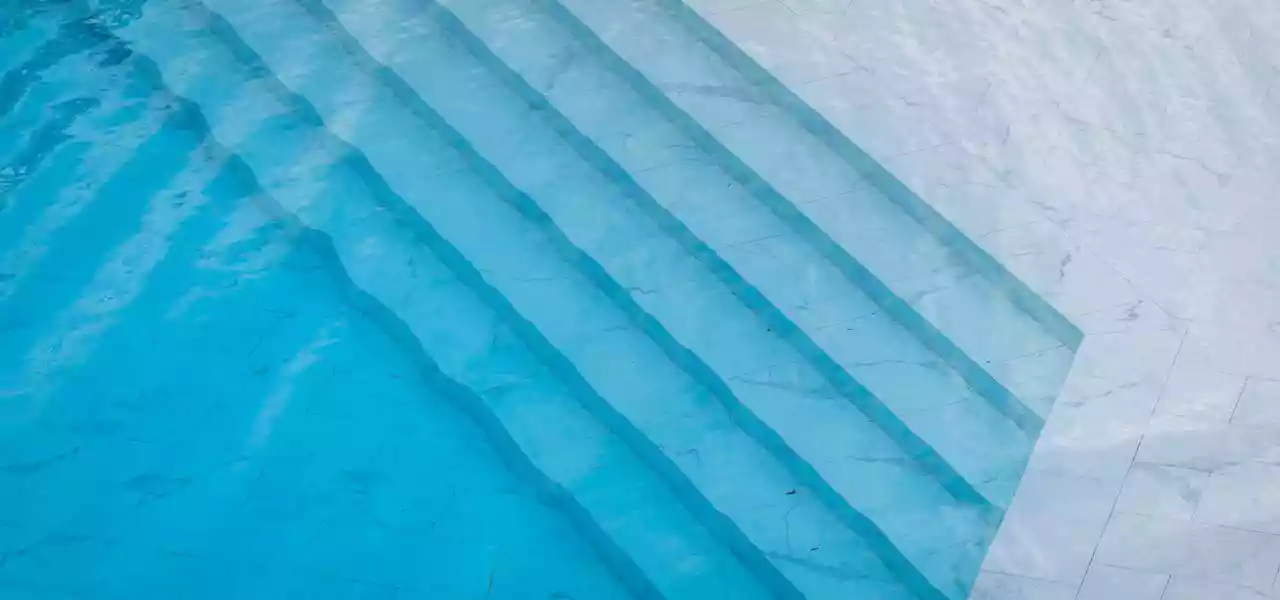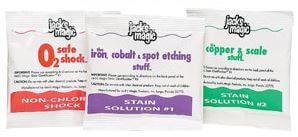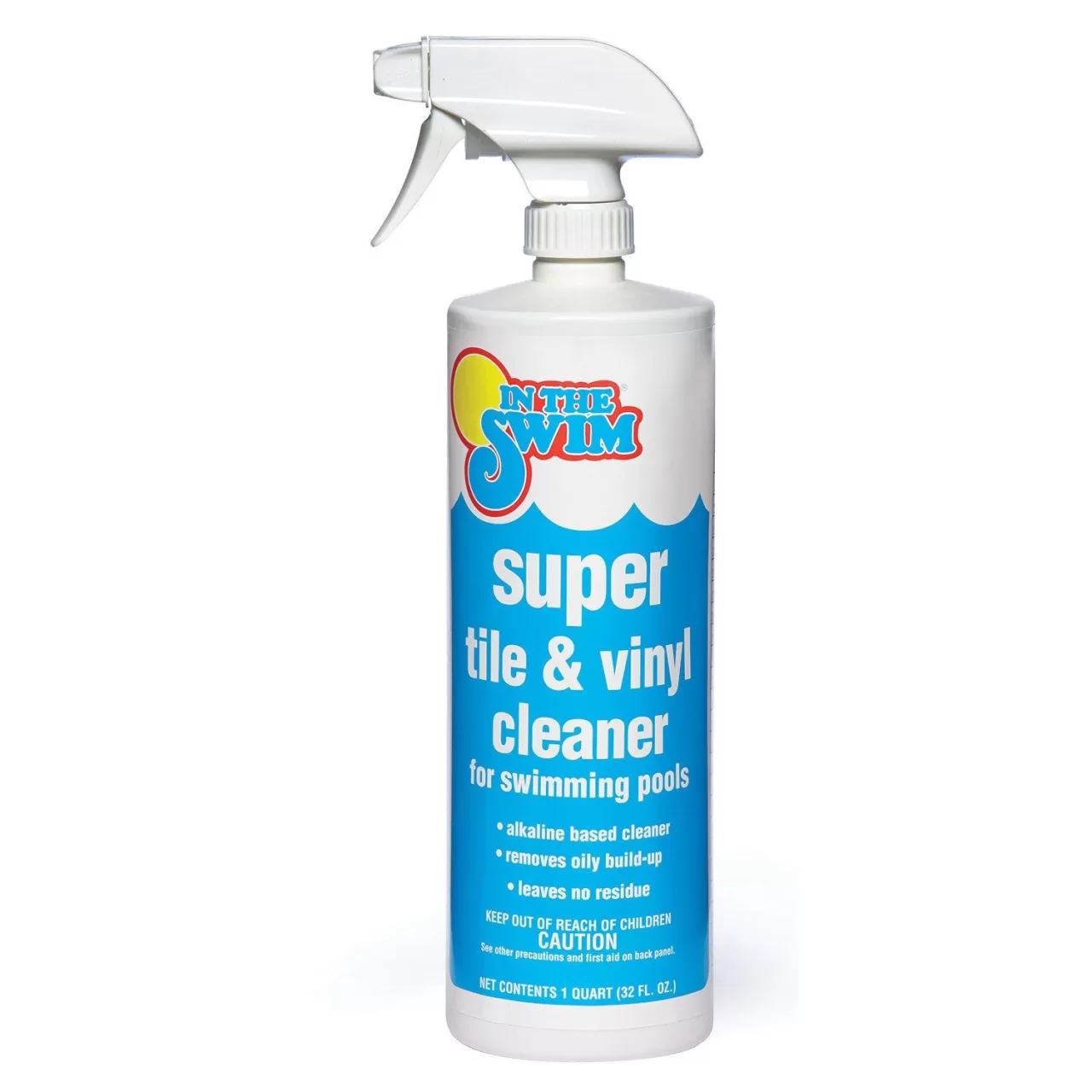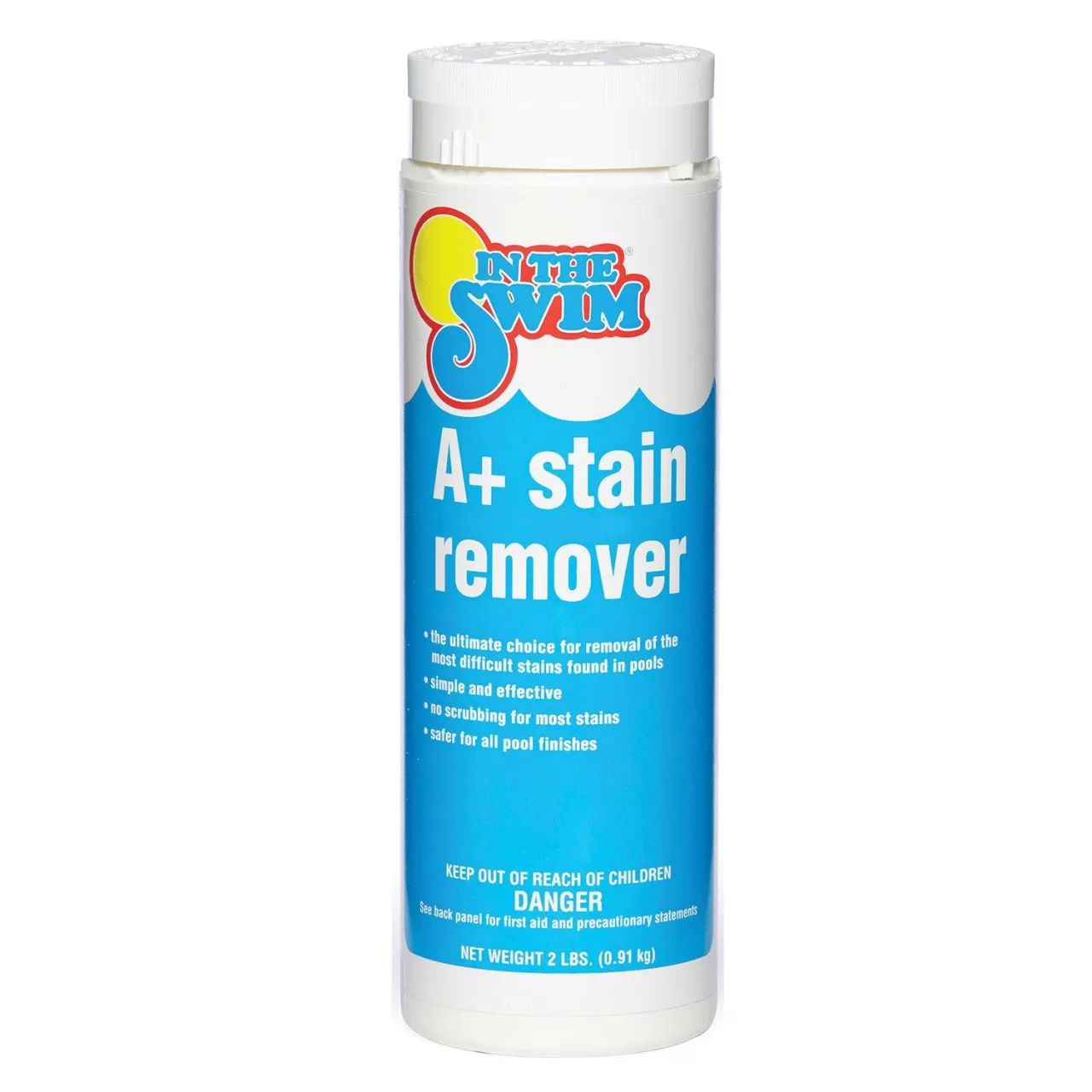FREE Standard Shipping On All Orders $100 or More!*

Swimming Pool Stains Removal Guide
A stained pool can be beyond embarrassing. Sometimes it's even worse than tattered carpet and stained couch cushions. The negative aesthetic can put a damper on your entire backyard experience. Unfortunately, hard-to-remove pool spots and stains will take a bit more than just brushing to remove. You need some powerful methods and techniques to treat existing stains and prevent future pool stains. But how?!
Don't worry, we've got you! In this post, we'll go over the different causes of pool stains, how to identify and treat different types of stains, and finally, how to manage a pool that stays stain-free.
What Causes Pool Stains?
Stains on pool surfaces can happen from a number of different scenarios. Most often, poor water balance and insufficient cleaning habits are to blame. But sometimes, the quality of your water source or even the construction of the pool can cause issues. The first step in getting rid of the stained eyesore in your pool is to diagnose the stain type. With this information, you can better identify the cause of the stain and start devising a treatment plan. Swimming pool stains are most often caused by:
- Metals or minerals in pool water coming out of solution
- Rust emerging through the wall, floor, or around fittings
- Organic material like leaves, dirt, oils, worms, or algae
Pool Stain Identification
How do you know which is which? First of all, determine if the stain is organic or metallic. The biggest clues involve the stain color, location, and general appearance of the stain (streaky, splotchy, evenly distributed, etc.).
In some cases, a pool may appear stained when it's really just algae. If the stain brushes off even slightly, or if the discoloration responds to shocking the water or sprinkling granular chlorine over it, then you're most likely dealing with an organic stain or an algae bloom. Visit our Pool Info page for more information on how to treat pool algae, or keep reading below to learn more about organic stains.

If algae and other organic contaminants aren't the cause, it is probably a stain caused by metals or minerals. You may need further identification. In this case, something like Jack's Magic Stain ID Kit can help determine the exact type of stain you have. The stain's reaction to any of the four topical tests will indicate the necessary product for its removal.
Another type of "stain" we get questions about involves natural mottling in plaster. This isn't actually a stain. Rather, it's a natural effect often seen in plaster pools due to natural product variations in hue and shade as the plaster is applied. Mottling is often subtle, but cannot be removed.
Metal or Mineral Pool Stains
An important part of pool management is testing and balancing your pool water. Test for metals and calcium content, and properly balance all aspects of water chemistry. When water is unbalanced, metals and calcium in the water can fall out of solution. This causes stains and scale to appear on pool surfaces. Maintain proper water chemistry and use stain and scale chemicals to manage metals and help prevent these types of stains from happening in the first place. Here's a quick summary of the causes and colors of different metallic or mineral-based pool stains:
| Cause of Stain | Common Causes/Sources | Common Colors |
| Calcium | Plaster, Grout, Mortar, Cal-Hypo Shock, Hard Water Sources | White or Light Gray (Crystals or Precipitate) |
| Cobalt | Fiberglass Pool Shells | Dark Gray, Black |
| Copper | Copper Algaecides, Ionizers, Corrosion of Copper Pipes/Fittings/Heaters | Deep Blue, Blue-Green, Green, Teal; Sometimes Reddish-Brown, Yellow-Brown, Black, or Purple |
| Iron | Well Water, Corrosion of Iron Pipes/Fittings/Rebar | Dark Red/Orange, Brown, Black; Sometimes Pale Green or Blue-Gray |
| Manganese | Well Water | Pink, Rose, Purple, Black, Green |
| Nickel | Corrosion of Nickel-Coated Nuts/Bolts/Heaters | Green, Brown, Black |
Scaly Buildup

A mineral or calcium stain is typically a scale, dirt, and oil film, presenting as dull discoloration. It's most often found at the waterline in scaly white, gray, or tan deposits. But in certain water conditions, scale can deposit an all-over dirty film onto other pool surfaces.
Manage excess calcium and minerals in pool water with In The Swim Stain Away, Natural Chemistry Scale Free, or Jack's Blue Stuff. Using enzymes like Pool Perfect or Pool Magic can break down oily organics, preventing them from taking over your pool and compounding the problem. For cleaning tile or vinyl at the waterline, try using our Super Tile & Vinyl Cleaner spray before resorting to more drastic measures like a professional acid wash or bead blasting. Inground concrete pools can also use pumice stones to remove scale buildup and efflorescence from tile, grout, plaster, PebbleTec, and stonework of all types. Unfortunately, pumice stones are not an option for vinyl liner pools.
Metals in the Pool
If the stain looks like rust, it probably is. Metal objects mysteriously finding their way into the pool typically cause isolated spots of rust stains. Either that, or the rust is coming from the inside-out. On concrete pools, this sometimes happens when rebar tie wires are too close to the surface, or if a crack allows water to reach the rebar steel. On vinyl pools, galvanized steel walls in wet soils can eventually break down and start staining the liner. In this case, the process can be slowed with paint and wall foam.
If your water test indicates that your water has metals in it, the first thing to do is to manage and control those metals with a powerful stain fighter like In The Swim Stain Away, Metal Free, Metal Klear, or CuLator. Using these treatments regularly will not only help address your current stain situation, but will help maintain protection and keep metal stains from returning in the future.
Treatment and Removal of Metal/Mineral Stains

Depending on the type of metal stain you're dealing with, there are a few different ways to go about removing it. A common treatment is to use something like Natural Chemistry Stain Free or our own A+ Stain Remover, both of which are made of ascorbic acid. These products are basically granular Vitamin C, making them a great all-natural pool stain remover. To know if it will work on your pool stains, take a Vitamin C tablet from your medicine cabinet, and either grind it up and sprinkle it, or rub it against the stained area to see if it lightens.
If that doesn't work, you may want to try something like our EZ Stain Remover instead, which is tough on metallic stains in any type of pool – concrete or vinyl. For severe staining in pools with very high metal levels, or for pools that have had chronic staining problems for many years, re-treatment may be needed. However, for most pools with light overall staining or a few spots here and there, EZ Stain Remover will often do the job.
If the staining has reached your pool steps and they need an extra scrub, try Jack's Magic Step Stuff to whiten your pool steps back to like-new condition. Step Stuff is a two-step process that restores stained ABS plastic vinyl liner pool steps. Remember to follow instructions and water balance guidelines carefully for best results.
For extremely difficult stains in plaster pools, or to address scale buildup along the waterline, you can also try lowering the water level and applying a weak solution of Acid Magic directly to the wall from a watering can. Acid Magic is a user-friendly alternative to muriatic acid. Start by pouring two cups of Acid Magic into one gallon of water. Then apply this mixture directly on plaster or pebble surfaces, and hose off thoroughly according to product label instructions. If the staining is severe enough or covers a majority of the pool, you might be ahead to look into professional acid washing services, instead.
Just remember, NEVER use household cleaning products to remove pool stains! Doing so can bring phosphates and other problematic chemicals into your pool water. Always use products specifically formulated for pool use.
Organic Pool Stains
Organic contaminants in a pool can discolor surfaces just as quickly and easily as metals and minerals can. Something organic, like tannins leaching from leaves, acorns, or mud sitting in the bottom of the pool, often causes a greenish-brown colored pool stain. Algae, worms, or other animals can also leave behind ugly stains on pool surfaces. Berries from surrounding trees and bushes can also discolor a pool, and will create a red or blue stain.
The best defense in this case is to maintain a clean pool and keep contaminants to a minimum. If necessary, do a bit of lawn work to reduce the amount of tree and shrub debris entering the pool. Use a leaf rake or skimmer to remove large debris on a daily basis. Then, run the filtration system to remove fine debris in the water, and use a vacuum or automatic pool cleaner for sunken particles at the bottom of the pool. As we mentioned earlier, enzymes can help break down organic contaminants and oily residues. This will also help your sanitizer work more efficiently and reduce your chances of organic pool stains appearing. Enzymes are a MUST when closing the pool for the winter.
Treatment and Removal of Organic Stains
A simple way to get rid of most organic pool stains is to shock the pool and give your pool a little TLC with a good brushing. When that's not enough, organic pool stains in concrete pools can usually be "bleached" away with chlorine granules sprinkled over the area. Vinyl pool owners should pre-dissolve the chlorine first, then pour directly over the stain. If not, try the methods mentioned above for removing metal and mineral stains.

To skip the harsh chemicals, consider using a Stain Eraser. Available in types for vinyl or concrete pools, this product serves as a mild abrasive, enhancing your stain scrubbing efforts. It also comes in handy as a tile grout scrubber to get in between those fine cracks. The tan eraser is for concrete pools, and the blue eraser is for vinyl pools. Both easily attach to your telescoping pool pole for hard to reach pool stains.
Some of the worst pool staining can occur from mudslides, mulch, or soil overflowing into the pool. When correction is impossible, dark-colored plaster or a pool liner can conceal certain stains.
We hope these suggestions enhance your understanding of pool stains and offer effective removal and prevention methods. Again, the easiest way to deal with pool stains is to prevent them from happening in the first place. You can do this by keeping your pool clean, your chemical levels balanced, and your metals and minerals properly sequestered. An ounce of prevention is worth a pound of cure, or in this case, a hassle-free, beautiful pool.
In the event that you do find yourself struggling with difficult pool stains, we've assembled a series of useful tips for you based on the different pool types: